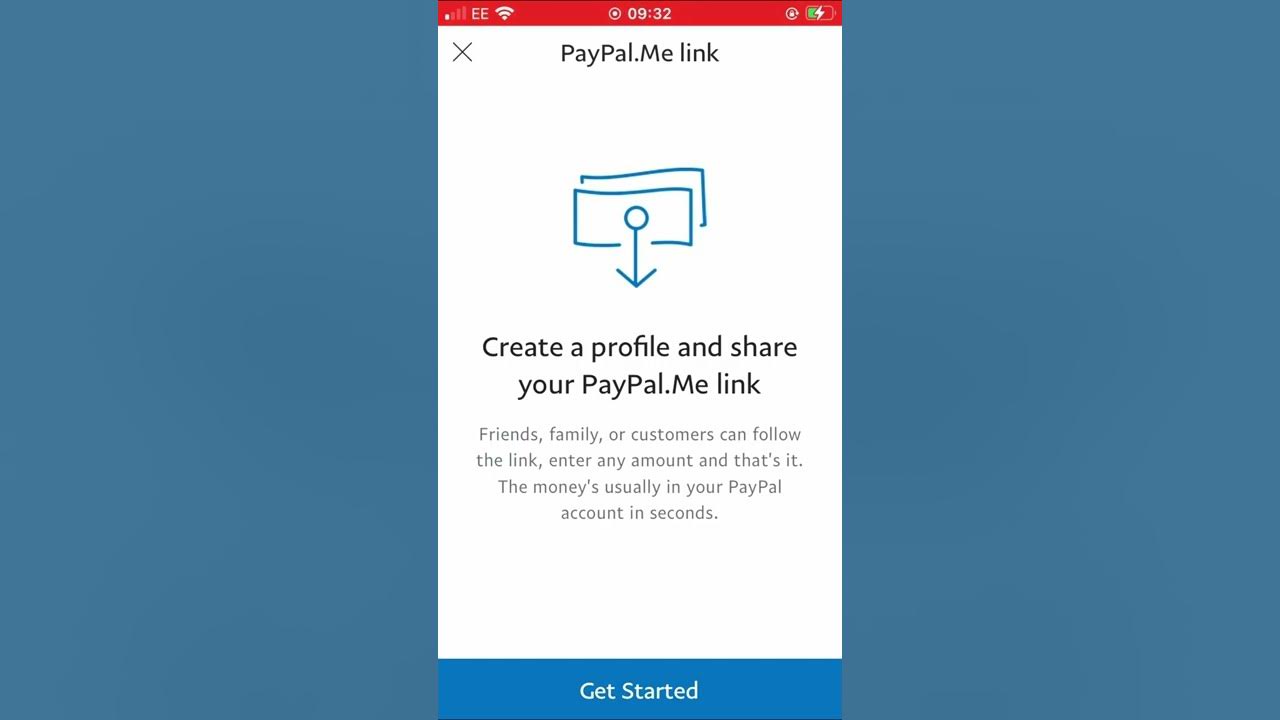Introduction
Embedded Fintech is a concept that has been gaining traction in recent years, revolutionizing the way financial services are provided and integrated into various industries. As technology continues to advance, traditional financial institutions are finding new ways to embed their services directly into the products or services of other businesses, creating a seamless and integrated experience for customers.
Embedded Fintech goes beyond the traditional model of standalone financial applications or platforms. Instead, it focuses on integrating financial services into the existing infrastructure of businesses, enabling them to offer financial products and services without the need for customers to navigate to separate platforms or applications. This integration allows for a more convenient and frictionless experience for consumers, as well as significant opportunities for businesses to enhance customer loyalty and generate additional revenue streams.
With the rise of the Internet of Things (IoT) and advancements in connectivity, the potential for embedding financial services into everyday devices and platforms has become a reality. From smart appliances that can automate bill payments to e-commerce platforms that offer seamless checkout experiences, Embedded Fintech is transforming the way we interact with financial services.
Moreover, Embedded Fintech enables businesses to leverage the vast amounts of data generated by their customers’ transactions, enabling them to provide personalized and tailored financial solutions. By embedding financial services into their offerings, companies can gain deeper insights into customer behaviors, preferences, and financial needs, allowing them to develop more targeted products and services.
In this article, we will explore the definition of Embedded Fintech, discuss its benefits and challenges, highlight some examples of Embedded Fintech in action, and speculate on its future outlook. By understanding the impact of Embedded Fintech, businesses can capitalize on this growing trend and stay ahead in the ever-evolving world of financial services.
Definition of Embedded Fintech
Embedded Fintech refers to the integration of financial services directly into the products or services of non-financial businesses. It involves embedding financial capabilities, such as payments, lending, insurance, or wealth management, into the existing infrastructure of other industries, creating a seamless and integrated user experience.
This integration allows businesses to offer financial services without the need for customers to access separate platforms or applications. Instead, financial functionalities and products are seamlessly incorporated into the customer journey, providing convenience and streamlining transactions.
Embedded Fintech can be seen in various industries, including e-commerce, transportation, hospitality, healthcare, and more. For example, e-commerce platforms may offer integrated payment solutions that allow customers to make purchases without being redirected to external payment gateways. Ride-sharing services may provide in-app digital wallets, enabling users to pay for their rides seamlessly. Healthcare providers may incorporate insurance services directly into their platforms, simplifying the billing and claims process for patients.
With Embedded Fintech, businesses can leverage the trust and loyalty they have already established with customers to offer additional financial services. By integrating these services into their existing offerings, businesses can create new revenue streams and enhance customer engagement. They can also benefit from the rich customer data generated through transactions, enabling them to offer personalized financial solutions based on individual needs and preferences.
Embedded Fintech is made possible through advancements in technology, particularly with the proliferation of interconnected devices and application programming interfaces (APIs). APIs allow businesses to securely share data and functionality, facilitating the integration of financial services into non-financial platforms. Additionally, the rise of cloud computing and digital ecosystems has further accelerated the adoption of Embedded Fintech, enabling businesses to access and deliver financial services more efficiently and cost-effectively.
In summary, Embedded Fintech is reshaping the financial services landscape by integrating financial capabilities into the products and services of various industries. It offers businesses the opportunity to enhance customer experience, generate new revenue streams, and leverage customer data to provide tailored financial solutions. As technology continues to advance, we can expect Embedded Fintech to further disrupt and transform the way financial services are offered and consumed.
Benefits of Embedded Fintech
Embedded Fintech offers a wide range of benefits for both businesses and consumers. By seamlessly integrating financial services into non-financial products or services, Embedded Fintech revolutionizes the way people interact with financial offerings. Here are some key benefits of Embedded Fintech:
1. Enhanced Customer Experience: Embedded Fintech eliminates the need for customers to navigate through separate platforms or applications to access financial services. Instead, they can seamlessly access and utilize financial functionalities within the same ecosystem, resulting in a smoother and more convenient user experience.
2. Convenience and Frictionless Transactions: With Embedded Fintech, financial transactions can be seamlessly integrated into the customer journey, eliminating the need for manual data entry or external redirects. This seamless integration makes transactions faster, easier, and more secure, enhancing overall customer satisfaction.
3. Increased Revenue Streams: By embedding financial services into their offerings, businesses can generate additional revenue streams. Offering financial functionalities like payments, lending, or insurance enables businesses to tap into new revenue sources and monetize their existing customer base.
4. Improved Customer Loyalty and Engagement: Embedded Fintech allows businesses to leverage their existing customer relationships and trust to provide additional financial services. By offering integrated financial solutions, businesses can enhance customer loyalty, increase engagement, and improve customer retention rates.
5. Personalized Financial Solutions: Integrating financial services into non-financial platforms enables businesses to gather valuable customer data. This data can be used to gain insights into customer preferences, behaviors, and financial needs, allowing businesses to offer personalized and tailored financial solutions that address specific customer requirements.
6. Streamlined Operations: Embedded Fintech simplifies and automates financial processes for businesses. By integrating financial functionalities directly into their systems, businesses can streamline operations such as payments, invoicing, accounting, and compliance, reducing manual errors and saving time and resources.
7. Access to a Broader Customer Base: Embedded Fintech allows financial services to reach a wider audience through the integration with non-financial platforms. This enables financial institutions to tap into new customer segments and demographics, expanding their market reach and potential customer base.
8. Partnerships and Collaboration: Embedded Fintech encourages partnerships and collaboration between financial institutions and non-financial businesses. Through these partnerships, businesses can leverage each other’s expertise and resources, creating innovative solutions that benefit both parties and drive mutual growth.
Overall, Embedded Fintech has the potential to transform industries by providing a seamless and integrated financial experience for consumers while creating new revenue opportunities for businesses. As this trend continues to evolve, we can expect to see even more benefits emerge, further driving the adoption and advancement of Embedded Fintech.
Examples of Embedded Fintech
Embedded Fintech has already made a significant impact across various industries, transforming how financial services are integrated into everyday products and services. Here are some examples of Embedded Fintech in action:
1. E-commerce Platforms: Many e-commerce platforms have embedded financial services directly into their checkout processes. For instance, platforms like Shopify and WooCommerce offer integrated payment gateways, allowing businesses to accept various payment methods seamlessly. This integration eliminates the need for customers to be redirected to external payment platforms, streamlining the purchasing experience.
2. Ride-Sharing Services: Companies like Uber and Lyft have embedded payment capabilities directly into their apps. Users can link their credit or debit cards to their accounts, allowing for frictionless and cashless transactions. By integrating payments, these platforms offer a seamless and convenient experience for users, reducing the need for physical currency.
3. Hospitality Industry: Hotels and accommodations have embraced Embedded Fintech by integrating payment functionalities into their systems. For instance, many hotels allow guests to use their mobile devices to make payments for services like dining, spa treatments, or room upgrades. This integration not only enhances convenience for guests but also allows hotels to streamline billing and payment processes.
4. Healthtech: In the healthcare sector, Embedded Fintech is revolutionizing billing and insurance processes. Medical institutions can embed insurance functionalities into their platforms, allowing patients to submit claims directly through an app or portal. This integration simplifies the claims process, eliminates paperwork, and improves overall efficiency for both patients and healthcare providers.
5. Transportation and Mobility: Public transportation services are leveraging Embedded Fintech to facilitate seamless ticketing and fare payment. For example, cities like London and New York have introduced contactless payment systems on buses and trains, allowing passengers to tap their contactless cards or mobile wallets for fare payment. This integration simplifies the payment process and reduces the need for physical tickets or separate transportation cards.
6. Retail and Point-of-Sale: Point-of-sale (POS) systems have embedded financial services to enhance customer experience and streamline transactions. Businesses can use integrated payment terminals that accept various payment methods, including mobile wallets and contactless payments. This integration allows for faster and more secure transactions, improving the overall efficiency of retail operations.
7. Fintech Startups: Embedded Fintech is a core strategy for many fintech startups that aim to disrupt traditional financial services. Startups like Square and Stripe provide businesses with tools and APIs to embed payment processing directly into their platforms, empowering merchants to accept payments seamlessly and securely.
These examples highlight the diverse applications of Embedded Fintech, showcasing how financial services have become an integral part of various industries. As technology continues to advance, we can expect to see even more innovative use cases of Embedded Fintech across different sectors.
Challenges of Embedded Fintech
While Embedded Fintech presents numerous opportunities, there are also challenges that businesses and consumers must navigate. Here are some of the key challenges associated with Embedded Fintech:
1. Security and Privacy: With the integration of financial services into non-financial platforms, ensuring the security and privacy of customer data becomes paramount. Businesses must implement robust security measures to protect sensitive financial information from unauthorized access or breaches. Additionally, concerns about data privacy and how customer data is used and shared need to be addressed to maintain trust with users.
2. Regulatory Compliance: Embedded Fintech involves the collaboration between financial institutions and non-financial businesses, which can complicate regulatory compliance. Financial regulations and requirements must be adhered to, including know your customer (KYC) and anti-money laundering (AML) regulations. Businesses need to navigate the complex landscape of compliance to ensure they are meeting all necessary regulatory obligations.
3. Integration Complexity: Integrating financial services into existing platforms or systems can be complex and time-consuming. Businesses need to invest in the technological infrastructure and resources required to seamlessly embed financial functionalities without disrupting existing operations. The integration process may require coordination between different teams, third-party providers, and adherence to industry standards such as application programming interface (API) specifications.
4. Customer Education: As Embedded Fintech introduces new ways of accessing and utilizing financial services, there is a need for customer education. Users need to understand how to navigate and utilize the embedded financial functionalities effectively. Businesses must provide clear and user-friendly instructions, tutorials, and support to ensure customers can make the most out of the integrated financial services.
5. Fragmented Ecosystems: The diversity of financial services and non-financial platforms can lead to a fragmented ecosystem. Different businesses may offer their own embedded financial solutions, leading to a lack of standardization and interoperability. This fragmentation can create challenges for customers who may need to navigate multiple platforms or accounts, leading to potential confusion or inefficiencies.
6. Risk Management: Embedded Fintech introduces new risks that businesses need to manage. This includes risks related to fraud, cybersecurity, and financial stability. Businesses need to implement risk management strategies to identify, assess, and mitigate these risks to protect both themselves and their customers.
7. Resistance to Change: Adopting Embedded Fintech may require a cultural shift within organizations and industries. Traditional business models and processes may need to be reevaluated and redesigned to accommodate the integration of financial services. Resistance to change from stakeholders or employees can hinder the successful implementation of Embedded Fintech initiatives.
Addressing these challenges requires collaboration between financial institutions, technology providers, policymakers, and businesses. By proactively addressing security, regulatory, and operational concerns, businesses can navigate these challenges and fully leverage the potential of Embedded Fintech.
Future Outlook of Embedded Fintech
The future of Embedded Fintech is promising, with continued advancements in technology and increased adoption across industries. Here are some key trends and developments that shape the future outlook of Embedded Fintech:
1. Expansion of Industry Applications: As businesses across various sectors recognize the benefits of Embedded Fintech, we can expect to see its adoption expand into new industries and verticals. From education and real estate to logistics and agriculture, businesses in diverse sectors will integrate financial services to enhance customer experiences, optimize operations, and drive innovation.
2. Interconnected Devices and Internet of Things (IoT): The rise of IoT will play a significant role in the growth of Embedded Fintech. With more devices becoming interconnected, businesses will have the opportunity to embed financial capabilities into everyday objects, creating new revenue streams and transforming how financial services are accessed and leveraged.
3. Hyper-Personalization and Customization: Embedded Fintech will enable businesses to provide highly personalized financial solutions to their customers. Using data analytics, artificial intelligence, and machine learning, businesses will be able to offer tailored financial services that fit individual customer preferences, needs, and behaviors. This level of customization will drive customer loyalty and satisfaction.
4. Collaboration and Ecosystem Development: The future of Embedded Fintech lies in fostering collaboration and developing robust ecosystems. Financial institutions, technology providers, and non-financial businesses will collaborate to create integrated financial solutions that seamlessly blend into existing platforms. This collaboration will drive innovation and open doors to new opportunities for both businesses and consumers.
5. Enhanced Security and Trust: As Embedded Fintech continues to evolve, there will be a focus on enhancing security measures and building trust with customers. Stricter data protection regulations, advanced authentication methods, and secure infrastructure will be essential to protect sensitive financial information and ensure customer confidence in embedded financial services.
6. Democratization of Financial Services: Embedded Fintech has the potential to democratize access to financial services, especially in underbanked or underserved populations. By embedding financial capabilities into everyday platforms, businesses can reach a wider audience and provide essential financial services to those who previously had limited access.
7. Standardization and Integration Frameworks: To address the challenge of fragmentation, there will be a need for industry-wide standards and integration frameworks. Standardization will ensure interoperability and seamless integration of different embedded financial services, enabling a cohesive and unified user experience across various platforms.
Overall, Embedded Fintech is poised to play a pivotal role in the future of financial services. As technology continues to advance and businesses strive for innovative solutions, the integration of financial services into non-financial platforms will become even more prevalent. By embracing the opportunities and overcoming the challenges, businesses can stay at the forefront of this transformative trend and shape the future of Embedded Fintech.
Conclusion
Embedded Fintech is revolutionizing the way financial services are provided and integrated into various industries. By embedding financial capabilities directly into non-financial platforms and products, businesses can offer seamless and convenient financial services to their customers. This integration enhances customer experiences, streamlines transactions, and creates new revenue streams.
Throughout this article, we have explored the definition of Embedded Fintech and its benefits. We have seen how Embedded Fintech enhances customer experiences, offers convenience, increases revenue streams, and provides personalized financial solutions. We also discussed some examples of Embedded Fintech in action, showcasing how industries like e-commerce, transportation, and healthcare have integrated financial services.
However, we must also recognize the challenges associated with Embedded Fintech. Security and privacy concerns, regulatory compliance, integration complexity, and customer education are crucial aspects that need to be addressed effectively. Additionally, the fragmented nature of the ecosystem and the need for a cultural shift within organizations pose challenges that require careful navigation.
Looking ahead, the future of Embedded Fintech is promising. We can anticipate the expansion of applications across various industries, driven by interconnected devices, hyper-personalization, and collaboration between financial institutions and non-financial businesses. Advanced security measures, trust-building efforts, and standardization are crucial factors that will shape the future of Embedded Fintech.
As businesses continue to capitalize on the potential of Embedded Fintech, it is important to embrace this transformative trend while addressing its challenges effectively. By doing so, businesses can enhance customer experiences, drive innovation, and stay ahead in the ever-evolving world of financial services.

























